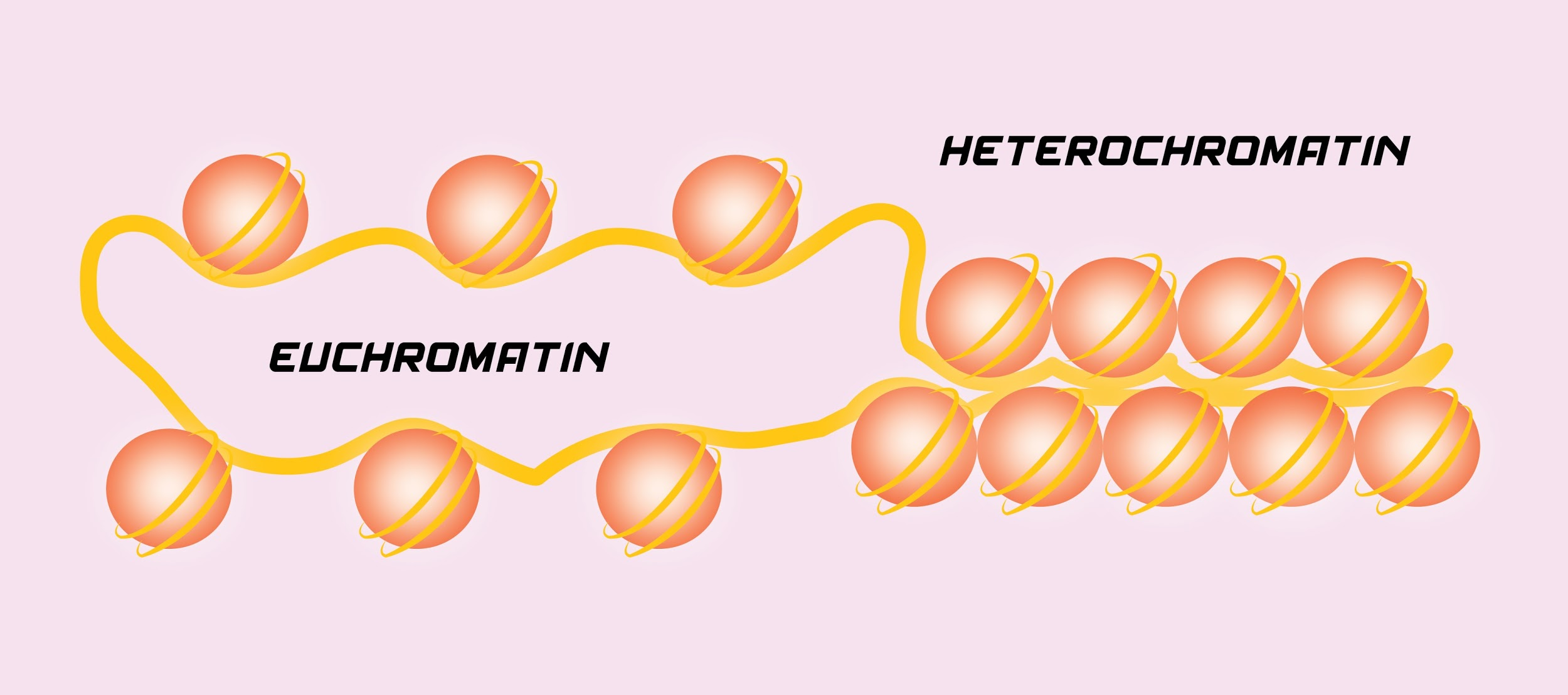
The component of a chromosome that controls heredity is
(a)Protein
(b)Histone
(c)DNA
(d)RNA
Answer
552k+ views
Hint: A chromosome is a highly coiled form of the genetic material in the nucleus. Chromosomes are best visible in the metaphase of cell division as the condensation of chromatin is fully complete in that stage. The chromosome is made up of two chromatids that are attached together by the centromere.
Complete answer:
The genetic material is present in the form of chromatin which is a loose and indistinct network of nucleoprotein fibers. The Nucleo part is made up of the nucleic acid DNA and the protein part is made up of histone and non-histone proteins. The DNA is two meters long and it is distributed among 46 (twenty-three pairs) chromosomes. DNA is made up of nucleotides and the sequence in which they are arranged determines the genotype and phenotype of a person. DNA results in the formation of RNA which results in the formation of proteins and thus decides the phenotype. Thus, the component of a chromosome that controls heredity and inheritance is DNA.
Additional Information: -Histones are proteins that are positively charged and basic in nature. This is because histones contain many basic amino acids like lysine and arginine and these two amino acids carry positive charges in their side chains.
-Histones are made up of eight molecules known as histone octamers.
-The negatively charged DNA is electrostatically attracted to the positive histone and is wrapped around the histone octamer to form a structure called a nucleosome.
-Nucleosomes are the repeating unit of chromatin and they appear like ‘beads-on-string’ when chromatin is viewed under a microscope.
-This beads-on-string structure is further packed and coiled to form chromosomes along with the help of an additional set of proteins known as Non-Histone Chromosomal (NHC) proteins.
So, the correct option is ‘DNA’.
Note: -In a nucleus, there are some regions of chromatin that are loosely packed and thus stain lightly known as euchromatin.
-The other regions of the chromatin are more densely packed and thus stain dark known as heterochromatin.
-Euchromatin is loosely packed because it is more transcriptionally active whereas heterochromatin is inactive.

Complete answer:
The genetic material is present in the form of chromatin which is a loose and indistinct network of nucleoprotein fibers. The Nucleo part is made up of the nucleic acid DNA and the protein part is made up of histone and non-histone proteins. The DNA is two meters long and it is distributed among 46 (twenty-three pairs) chromosomes. DNA is made up of nucleotides and the sequence in which they are arranged determines the genotype and phenotype of a person. DNA results in the formation of RNA which results in the formation of proteins and thus decides the phenotype. Thus, the component of a chromosome that controls heredity and inheritance is DNA.
Additional Information: -Histones are proteins that are positively charged and basic in nature. This is because histones contain many basic amino acids like lysine and arginine and these two amino acids carry positive charges in their side chains.
-Histones are made up of eight molecules known as histone octamers.
-The negatively charged DNA is electrostatically attracted to the positive histone and is wrapped around the histone octamer to form a structure called a nucleosome.
-Nucleosomes are the repeating unit of chromatin and they appear like ‘beads-on-string’ when chromatin is viewed under a microscope.
-This beads-on-string structure is further packed and coiled to form chromosomes along with the help of an additional set of proteins known as Non-Histone Chromosomal (NHC) proteins.
So, the correct option is ‘DNA’.
Note: -In a nucleus, there are some regions of chromatin that are loosely packed and thus stain lightly known as euchromatin.
-The other regions of the chromatin are more densely packed and thus stain dark known as heterochromatin.
-Euchromatin is loosely packed because it is more transcriptionally active whereas heterochromatin is inactive.

Recently Updated Pages
Master Class 12 English: Engaging Questions & Answers for Success

Master Class 12 Business Studies: Engaging Questions & Answers for Success

Master Class 12 Economics: Engaging Questions & Answers for Success

Master Class 12 Social Science: Engaging Questions & Answers for Success

Master Class 12 Maths: Engaging Questions & Answers for Success

Master Class 12 Chemistry: Engaging Questions & Answers for Success

Trending doubts
What are the major means of transport Explain each class 12 social science CBSE

Which are the Top 10 Largest Countries of the World?

Draw a labelled sketch of the human eye class 12 physics CBSE

Explain sex determination in humans with line diag class 12 biology CBSE

The pH of the pancreatic juice is A 64 B 86 C 120 D class 12 biology CBSE

Explain sex determination in humans with the help of class 12 biology CBSE




